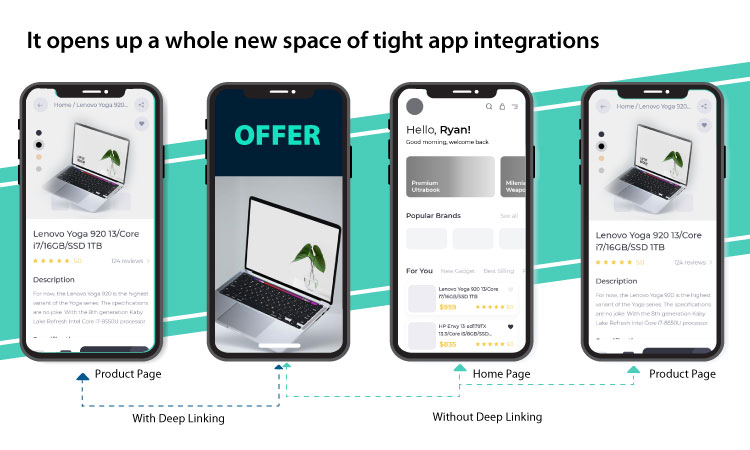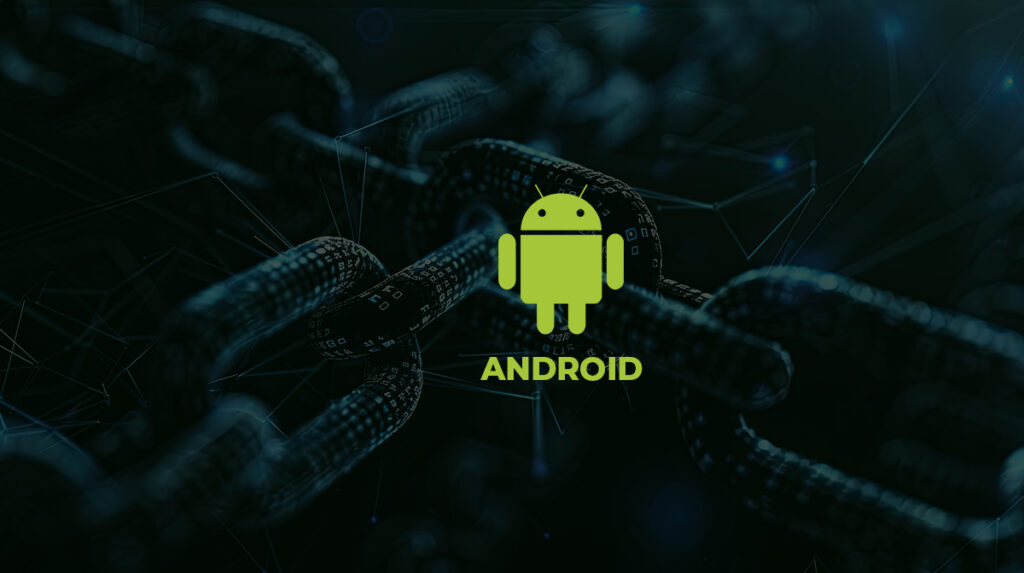
About 86% of the 3 hours people spend on their phones daily, are spent within their mobile apps. While the majority of Web designers have mastered the art of successful hyperlinking, the mobile community is yet to completely embrace it. Many apps do have hyperlinks, but they aren’t deep links.

Deep links allow you to go straight to a specific piece of material. Although generic links can take users to a website’s homepage (for example, http://www.brainvire.com), deep links take them to a specific page or section within that site (for example, https://www.brainvire.com/android-application-development/).
What Is Deep Linking?
Deep links are links that take users straight to a specific page. They are used to direct users to specific in-app locations, saving them time and energy in the process of locating a specific page and thereby enhancing the user experience.

How Do Deep Links Work?
Deep linking enhances the user experience by defining an intent URL on Android devices that automatically launches your app if it’s already enabled. Deep links can also be used to guide users to specific events or sites, which can fit in with any promotions you’re running.

A deep link is a purpose filter that enables users to access a particular operation in an Android app without leaving the app. However, there is a problem with this process. When a user clicks on a URL, a dialogue box can appear, asking the user to choose from a list of apps that can handle the URL.

Benefits Of Deep Links
â— Deep links provide a more seamless user experience.
â— The probability of successful installs is much larger.
â— You can create complex campaigns.
â— Users can download your app with just one click.
â— People can be incentivized more easily.
â— There is a significant growth in your conversion and retention rates.
â— Campaigns can be monitored to track performance.
Reasons Why Apps Go Deep
Users of the internet hope and even plan to be able to follow a hyperlink directly to the information they need. Although the software development community is likely aware of their wishes, three major obstacles keep app developers from completely embracing deep linking.
The Dysfunctionality
The processes for deep linking on iOS and Android are very different. There is no standard way to expand the functionality across all of these common platforms at the moment. App developers must manually build separate deep links for each different mobile operating system, which is a tedious and time-consuming process.
Often Ignored
Deep linking isn’t a particularly exciting or inspiring subject. Deep linking is a function that is so basic and straightforward that it is often ignored by brands that choose to invest in complicated email or social media campaigns.
Less Demand
Users may not know the importance of deep linking because it is such a minor function, so there is little demand to introduce it. The lack of deep links, on the other hand, increases user dissatisfaction and fatigue because users must actively search for relevant content rather than having an app leading them to it.
Types of Mobile Deep Linking
- Standard Deep Linking: Uses your app’s URL to guide users to a particular section of your app. These have the drawback of only working if the user has the software installed on their smartphone. Otherwise, the user would be guided to an error page.
- Deferred Deep Linking: If the app is enabled, users will be directed to the relevant content; if the app is not installed, users will be directed to the app store page.
- Contextual Deep Linking: This type of deep linking can perform the same functions as the other two styles, but it also allows for more accurate monitoring and better user relevancy. It benefits both developers and consumers because these connections transfer data to an app during installation, allowing for better attribution as well as customized onboarding.
Getting To Know Intent Filters
When a user clicks the URL, the Android System will try these actions, in sequential order, until the request succeeds:
1. Open the user’s preferred app that can handle the URI, if one is designated.
2. Open the only available app that can handle the URI.
3. Allow the user to select an app from a dialog.
For these steps to be performed, you must first create an aim filter before you can create a deep connection to your app’s content. The types of intents that the operation would like to obtain are defined by an intent filter. It’s defined in the manifest file.
Components of an Intent Filter
- Action: You must define an action for Google Search to understand your intent.
- Data: Used to specify the URI format for the operation. In a single purpose filter, you can have one or more. To identify the deep connection, the data tags have a scheme, host, route, and query parameters.
- Category: For your deep connection to work, you must identify some categories. To make your deep connection function in a browser, you must first define the category. If you don’t have it, clicking a deep connection in a browser won’t take you to your app.
Category also allows your app to manage implied intents. In order for the operation to begin, the aim must define the app component name if it is missing.
When you define the intent filter that can handle a specific set of URLs, the Android System can start your activity via that intent filter. By clicking on the link, you will be redirected to the desired app.
Conclusion
Deep Links seems trivial, but are a valuable addition to your app. Just as Dr. Ralf Speth, CEO of Jaguar Land Rover says, “If you think good design is expensive, you should look at the cost of bad design.” Having deep links in your app is a testament to the fact that your app design and user experience is well thought and planned.
Hire mobile developer who understands your need to be immaculate with your app’s user experience. That’s how users like it, and that’s how your app experiences organic growth – by taking care of little but important features. Get in touch with us to avail our top-notch android app development services. Our team of experienced developers will pay attention to every minute detail that makes your app better.
Related Articles
-
Android Application Development – Reasons of Success
There is no deny that Android is one of the most popular operating system these days and highly preferred choice for mobile app development as it offers plethora of advanced
-
How To Choose A Framework For Android App Development?
Which was the recent Android application that you enjoyed using? Instagram, Facebook, WhatsApp, and others are a few popular apps people use regularly and enjoy their access. However, apart from
-
All You Need To Know About Mobile Application Development
Android Application Design, Development, Publishing to Google Play and Marketing Welcome to the Mobile Age Talking About All You Need To Know About Mobile Application Development, Moving on from “nice




